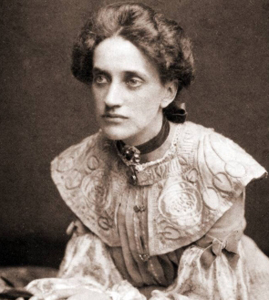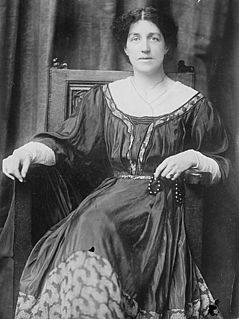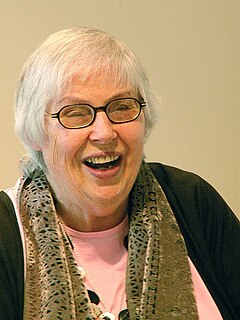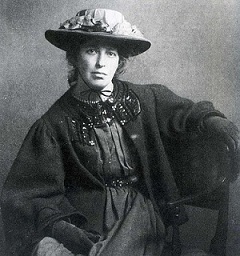
Embroidery is the craft of decorating fabric or other materials using a needle to apply thread or yarn. Embroidery may also incorporate other materials such as pearls, beads, quills, and sequins. In modern days, embroidery is usually seen on caps, hats, coats, blankets, dress shirts, denim, dresses, stockings, and golf shirts. Embroidery is available with a wide variety of thread or yarn color.

The Royal School of Needlework (RSN) is a hand embroidery school in the United Kingdom, founded in 1872 and based at Hampton Court Palace since 1987.

Ann Macbeth was a British embroiderer, designer, teacher and author, a member of the Glasgow Movement and an associate of Charles Rennie Mackintosh. She was also an active suffragette and designed banners for suffragists and suffragettes movements.

Mary "May" Morris was an English artisan, embroidery designer, jeweller, socialist, and editor. She was the younger daughter of the Pre-Raphaelite artist and designer William Morris and his wife and artists' model, Jane Morris.
The Embroiderers' Guild is the UK's leading educational charity promoting embroidery.
Dora May Billington was an English teacher of pottery, a writer and a studio potter. Her own work explored the possibilities of painting on pottery.
Arline Fisch is an American artist and educator who works with metal as her medium.

Valerie Campbell-Harding was an experimental textile art designer and author of 24 books.

Young Yang Chung is a textile historian and embroiderer. She earned a Ph.D. at New York University in 1976, with a doctoral dissertation on the origins of embroidery and its historical development of China, Japan, and Korea, and has lectured worldwide on the topic of East Asian embroidery. Through lectures, demonstrations, writings, teaching, workshops, and exhibitions of her work, she has endeavored to foster appreciation of an art form often stigmatized as "women's work" and to challenge the notion of textiles as "minor arts".

Enid Crystal Dorothy Marx, RDI, was an English painter and designer, best known for her industrial textile designs for the London Transport Board and the Utility furniture Scheme. Marx was the first female engraver to be designated as a Royal Designer for Industry.

Helen Kathleen Ramsay Whyte MBE (1909–1996) was a Scottish embroiderer and teacher of textile arts.

Jessie Newbery was a Scottish artist and embroiderer. She was one of the artists known as the Glasgow Girls. Newbery also created the Department of Embroidery at the Glasgow School of Art where she was able to establish needlework as a form of unique artistic design. She married the director of the Glasgow School of Art, Francis Newbery, in 1889.
Julia Sorrell is a British artist known for her portraits and imaginative drawings and paintings using figures and natural forms such as wood, shells, rock and plants using a range of media from pencil, charcoal, pen & ink, pastel, watercolour and oil. She lives in Norfolk and exhibits in London at the Mall Galleries as a member of the Royal Institute of Painters in Water Colours and the Royal Society of British Artists.
Frances Richards née Clayton, was a British painter, embroiderer and illustrator.
The 62 Group of Textile Artists is an international group of professional textile artists founded in the United Kingdom in 1962. The group is a Constituted Artists Co-operative, focussed on exhibiting the work of its members in the UK and overseas. Membership of the group is achieved through a selection process. The 62 Group requires members to submit work to a selection panel of their peers for every exhibition "If members fail to submit, or are rejected for three successive exhibitions, then membership is forfeited...a policy which ensures that the group consistently produces exciting work." The increased profile of textile art and its evolution in the latter part of the 20th century "has to a great extent been dictated by members of the 62 Group."
Val Archer is a British oil painter and teacher who is known for her meticulously composed still life paintings.

Beryl Dean MBE was a British embroiderer. She was known for rejecting the traditional Victorian designs and for creating her own contemporary embroidery designs.
Louisa Pesel (1870–1947) was an English embroiderer, educator and textile collector. She was born in Bradford, and studied textile design at the National Art Training School, causing her to become interested in decorative stitchery. She served as the Director of the Royal Hellenic School of Needlework and Lace in Athens, Greece from 1903-1907. Pesel served as the first President of the Embroiderers' Guild. She produced samplers for the Victoria and Albert (V&A) Museum and cushions, kneelers, alms bags and a lectern carpet for Winchester Cathedral. She collected textiles extensively, and following her death in Winchester in 1947, her collection went to the University of Leeds.
Lilian Margery Dring was a British artist known for her paintings, poster designs and textile designs. needlework and embroidery work.
Margaret Helen Swain was an English embroidery and textile historian. Trained as a nurse in London, she began a career as a historian after noticing no history about Ayrshire whitework embroidery in books following an exhibition at the Signet Library which she visited. Swain's research on the subject resulted in the publication of several books, she held two exhibitions, and wrote about embroidery, household textiles and tapestries in museum journals, magazines and newspapers. She was awarded an honourary Master of Arts degree from the University of Edinburgh in 1981. A pencil portrait of Swain was made by Elizabeth Blackadder and a collection of papers and objects related to her career are stored at National Museums Scotland.













